#VR CGI
Explore tagged Tumblr posts
Text

Open-source Tools and Scripts for XMLTV Data
XMLTV is a popular format for storing TV listings. It is widely used by media centers, TV guide providers, and software applications to display program schedules. Open-source tools and scripts play a vital role in managing and manipulating XMLTV data, offering flexibility and customization options for users.
In this blog post, we will explore some of the prominent open-source tools and scripts available for working with xmltv examples.
What is XMLTV?
XMLTV is a set of software tools that helps to manage TV listings stored in the XML format. It provides a standard way to describe TV schedules, allowing for easy integration with various applications and services. XMLTV files contain information about program start times, end times, titles, descriptions, and other relevant metadata.
Open-source Tools and Scripts for XMLTV Data
1. EPG Best
EPG Best is an open-source project that provides a set of utilities to obtain, manipulate, and display TV listings. It includes tools for grabbing listings from various sources, customizing the data, and exporting it in different formats. Epg Best offers a flexible and extensible framework for managing XMLTV data.
2. TVHeadend
TVHeadend is an open-source TV streaming server and digital video recorder for Linux. It supports various TV tuner hardware and provides a web interface for managing TV listings. TVHeadend includes built-in support for importing and processing XMLTV data, making it a powerful tool for organizing and streaming TV content.
3. WebGrab+Plus
WebGrab+Plus is a popular open-source tool for grabbing electronic program guide (EPG) data from websites and converting it into XMLTV format. It supports a wide range of sources and provides extensive customization options for configuring channel mappings and data extraction rules. WebGrab+Plus is widely used in conjunction with media center software and IPTV platforms.
4. XMLTV-Perl
XMLTV-Perl is a collection of Perl modules and scripts for processing XMLTV data. It provides a rich set of APIs for parsing, manipulating, and generating XMLTV files. XMLTV-Perl is particularly useful for developers and system administrators who need to work with XMLTV data in their Perl applications or scripts.
5. XMLTV GUI
XMLTV GUI is an open-source graphical user interface for configuring and managing XMLTV grabbers. It simplifies the process of setting up grabber configurations, scheduling updates, and viewing the retrieved TV listings.
XMLTV GUI is a user-friendly tool for users who prefer a visual interface for interacting with XMLTV data.
Open-source tools and scripts for XMLTV data offer a wealth of options for managing and utilizing TV listings in XML format. Whether you are a media enthusiast, a system administrator, or a developer, these tools provide the flexibility and customization needed to work with TV schedules effectively.
By leveraging open-source solutions, users can integrate XMLTV data into their applications, media centers, and services with ease.
Stay tuned with us for more insights into open-source technologies and their applications!

Step-by-Step XMLTV Configuration for Extended Reality
Extended reality (XR) has become an increasingly popular technology, encompassing virtual reality (VR), augmented reality (AR), and mixed reality (MR).
One of the key components of creating immersive XR experiences is the use of XMLTV data for integrating live TV listings and scheduling information into XR applications. In this blog post, we will provide a step-by-step guide to configuring XMLTV for extended reality applications.
What is XMLTV?
XMLTV is a set of utilities and libraries for managing TV listings stored in the XML format. It provides a standardized format for TV scheduling information, including program start times, end times, titles, descriptions, and more. This data can be used to populate electronic program guides (EPGs) and other TV-related applications.
Why Use XMLTV for XR?
Integrating XMLTV data into XR applications allows developers to create immersive experiences that incorporate live TV scheduling information. Whether it's displaying real-time TV listings within a virtual environment or overlaying TV show schedules onto the real world in AR, XMLTV can enrich XR experiences by providing users with up-to-date programming information.
Step-by-Step XMLTV Configuration for XR
Step 1: Obtain XMLTV Data
The first step in configuring XMLTV for XR is to obtain the XMLTV data source. There are several sources for XMLTV data, including commercial providers and open-source projects. Choose a reliable source that provides the TV listings and scheduling information relevant to your target audience and region.
Step 2: Install XMLTV Utilities
Once you have obtained the XMLTV data, you will need to install the XMLTV utilities on your development environment. XMLTV provides a set of command-line tools for processing and manipulating TV listings in XML format. These tools will be essential for parsing the XMLTV data and preparing it for integration into your XR application.
Step 3: Parse XMLTV Data
Use the XMLTV utilities to parse the XMLTV data and extract the relevant scheduling information that you want to display in your XR application. This may involve filtering the data based on specific channels, dates, or genres to tailor the TV listings to the needs of your XR experience.
Step 4: Integrate XMLTV Data into XR Application
With the parsed XMLTV data in hand, you can now integrate it into your XR application. Depending on the XR platform you are developing for (e.g., VR headsets, AR glasses), you will need to leverage the platform's development tools and APIs to display the TV listings within the XR environment.
Step 5: Update XMLTV Data
Finally, it's crucial to regularly update the XMLTV data in your XR application to ensure that the TV listings remain current and accurate. Set up a process for fetching and refreshing the XMLTV data at regular intervals to reflect any changes in the TV schedule.
Incorporating XMLTV data into extended reality applications can significantly enhance the immersive and interactive nature of XR experiences. By following the step-by-step guide outlined in this blog post, developers can seamlessly configure XMLTV for XR and create compelling XR applications that seamlessly integrate live TV scheduling information.
Stay tuned for more XR development tips and tutorials!
Visit our xmltv information blog and discover how these advancements are shaping the IPTV landscape and what they mean for viewers and content creators alike. Get ready to understand the exciting innovations that are just around the corner.
youtube
4 notes
·
View notes
Text
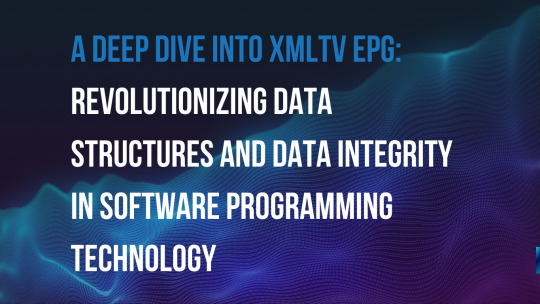
Future Trends: The Increasing Popularity of VR CGI in Digital Narratives
As technology improved, one exciting trend is the rising use of VR CGI in digital narratives. This innovative approach immerses audiences in stories like never before, blending virtual reality with stunning computer-generated imagery.
In this post, we will explore how VR CGI is transforming storytelling across various media, including xml epg guide, xmltv generator, and interactive experiences.
Extended Reality (XR), encompassing Virtual Reality (VR), Augmented Reality (AR), and Mixed Reality (MR), is poised to revolutionize the digital narrative landscape by merging the physical and virtual worlds.
As XR technologies advance, they are finding applications across numerous fields, enhancing user experiences and enabling new ways of interaction.
In the realm of digital narratives, this means a transformative shift towards more immersive and interactive storytelling formats.
For instance, interactive narratives will allow audiences to influence the direction of stories through choices, creating a personalized and dynamic storytelling experience. This level of interactivity, supported by gamification elements such as challenges and rewards, will make narratives not only more engaging but also deeply memorable.
Understanding the Popularity of VR CGI in IPTV EPG
The integration of AI in storytelling is set to redefine audience engagement, with AI-generated characters and chatbots improved based on user interactions. This dynamic personalization will tailor stories to individual preferences, enhancing emotional resonance and relevance.
Furthermore, user-generated storytelling platforms are empowering audiences to become storytellers themselves, fostering a rich diversity of narratives and perspectives. This shift is supported by advanced software capabilities that cater to a younger, digitally savvy audience, driving narrative innovation.
Rise of VR CGI in IPTV: Future XMLV EPG Trends
In the context of xmltv epg m3u and Mfiles technology, the use of immersive 360 VR experiences can evoke a strong sense of presence, making viewers feel like participants rather than mere observers. Directing attention in 360 VR storytelling remains a challenge, requiring innovative techniques to guide viewers to key story elements.
However, the potential for non-linear narratives in 360 VR allows viewers the freedom to explore different perspectives and storylines, enhancing the narrative depth and engagement. This integration of VR and CGI within XMLTV blogs can significantly enhance the viewer's experience, making the guide itself a part of an interactive entertainment experience.
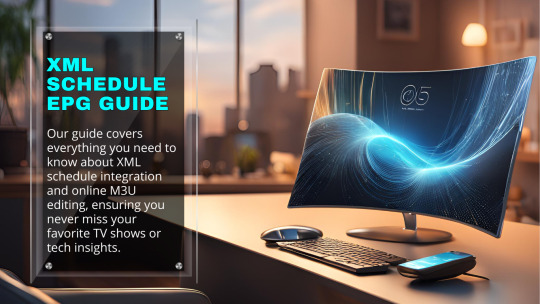
Bringing Digital and Physical Worlds Together
Augmented Reality (AR) and Virtual Reality (VR) technologies are pioneering the fusion of digital and physical realms, offering enhanced perceptions and interactions with the real world. AR overlays digital information onto the physical environment in real-time, using sophisticated tracking and rendering to blend virtual elements seamlessly.
This technology has not only captured the public's imagination through applications like Pokémon Go and Snapchat filters but is also expanding into sectors like retail, advertising, and tourism, enhancing user experiences by providing contextual information in an interactive format.
On the other hand, VR immerses users in a completely virtual environment, crafted to deliver a compelling sense of presence through multi-sensory feedback. This technology is employed across various fields including gaming, training simulations, and tourism, where it provides unique, immersive experiences that are profoundly engaging.
In educational settings, VR transforms learning by enabling interactive experiences that improve retention and engagement, such as virtual field trips or complex scientific simulations.
The convergence of AR and VR into Mixed Reality (MR) represents a significant leap towards blending the digital and physical worlds. MR allows for a spectrum of experiences where digital and real-world elements coexist and interact in real-time, offering new possibilities in gaming, entertainment, and beyond.
For instance, in architecture and design, MR can streamline design processes and enhance client presentations by superimposing proposed architectural changes onto existing physical spaces.
In healthcare, MR applications assist in complex surgical procedures by overlaying critical information onto the surgeon’s field of view, improving precision and patient outcomes. This integration of digital and physical realities is not only redefining user experiences but also setting new benchmarks in how we interact with and perceive our environment.
Optimization of VR Applications for XMLTV Generator
Throughout this article, we have traversed the innovative landscapes where virtual reality (VR) CGI and XMLTV converge, offering a glimpse into the future of ultra-immersive storytelling and content presentation in technology blogs.
The integration of VR CGI with XMLTV not only enriches the user experience by providing a dynamic and engaging way to explore program guides but also sets a new bar for the presentation of information.
Crafting content that leverages these technologies invites readers into a world where they are no longer passive consumers but rather active participants in an immersive journey.
The examples and use cases discussed underscore the practical applications and the transformative potential of merging VR CGI with XMLTV, from interactive program previews to enhanced storytelling that deeply resonates with the audience.
Acknowledging the boundless possibilities, it's clear that the amalgamation of VR CGI and XMLTV within technology blogs represents a pioneering step towards redefining digital narratives and user experience.
For content creators and technologists alike, understanding and harnessing this synergy is critical in crafting blogs that not only inform but also mesmerize and engage.
As we look forward, embracing these advancements could very well dictate the success and relevance of digital content within the ever-changing domain of technology and media.
As part of exploring this vast potential and ensuring content remains relevant and engaging, we invite you to uncover the boundless potential of Virtual Reality CGI and elevate your XMLTV Technology Blog by checking out our blog post and experiencing the ease of Entertainment Technology through XMLTV EPG for IPTV Guide.
Want to know more? You can visit this web page and discover the advantages it brings to every tech-savvy individuals and why content creators are captivated by these immersive narratives.
youtube
6 notes
·
View notes
Text
I'm still so unironically upset about the minecraft movie
#yeah its ugly as shit and makes a mockery of the themes of the game. yeah. anyway#what do you mean the pink sheep gets torn limb from limb and is screaming in pain.#what do you mean jack block crafted his elytra using iron#what do you mean that creepers are neutral mobs that only explode if punched#what do you mean that the end is never mentioned#what do you mean that the 2 female characters stay behind to build a house (despite ones whole motivation being finding her brother)#i actually shed tears when i learned that last one. the minecraft movie just barely passes the Bechtel test. im so upset about it#its a game ive loved for years and they get show an ounce of that love back? my favorite memories of friends and family includes minecraft.#i forced my mom to play and she got nauseous trying to focus. me and my brother would play together almost every day#i went to a sleepover and ended up staying up almost the whole night playing minecraft with her brother (she left to sleep hours before us)#i would run around the lbp inspired world for hours. i celebrated the first time i found a pink sheep#i recorded myself playing on my moms computer at 9 y/o and cheated shit in and i disnt care because i was having FUN. its still on youtube.#theres no love in that movie. and i feel like i should be able to laugh about it but i just cant#“just a kids movie isnt enough reason to release slop”#like. ok. story time.#im so tired.#minecraft#minecraft movie#im going to be forced to watch the movie by my parents soon and i hate watching movies this is gonna suck#but no... 'you like minecraft this is a minecraft movie and we never do anything as a FAMILY so we are gonna watch it!' fuck off???#like we didnt crowd into the living room to play vr games or anything... like we DO HAVE common interests. you dont gotta do this to us.#i know im being dramatic. im well aware. as someone whos been playing this game since i was 8; i think im entitled to a little drama#im aloud to be upset about a mockery of a movie that i wont even be aloud to make fun of#i know for a fact that my mom wil get mad at me if i point out the plot holes or bad cgi or complain in any way so#gotta do that here i guess.
11 notes
·
View notes
Text
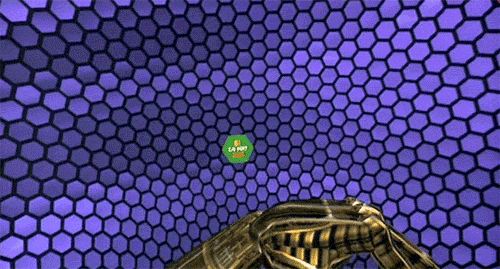
25 notes
·
View notes
Text
i am so tired of movies/tv shows trying to hide their imperfections with dark ass scenes like you should have used practical sets instead of slapping bad cgi everywhere 💀
#name a more annoying duo than disney + and their dark ass shows????#it’s so freaking annoying#look at POTC in comparison where a lot of scenes were dark??? you could still SEE stuff (and POTC did use CGI i know!)#i'm saying you can use CGI for dark scenes and still make it possible to watch#also yes i am aware that some media use CGI very well and we don't notice it (even on practical sets)#but full green screens (and even the mando VR set) cannot fool the human eye#just look at the last episodes of the mandalorian vs. andor and you can FEEL the difference
47 notes
·
View notes
Text

A 3D digital model by Duznot of Box from Logan's Run.
49 notes
·
View notes
Text



Propane Gas Grill sale on @renderositymagazine-blog @renderosity-refined-blog https://www.renderosity.com/marketplace/products/168145/propane-gas-grill
#3d model#3d prop#digital art#blender 3d#3d asset#low poly#pbr textures#pbr#game development#indiedev#indie#dev#vr ready#vr#bbq grill#outdoor prop#outdoors#3d graphics#cgi art#3d environment#3d art#propane gas grill#renderosity#sale#discount
3 notes
·
View notes
Text

This video won the MTV award for best visual effects! Featuring Alicia Silverstone (Clueless came out 2 years later), it was way ahead of its time.









Aerosmith - Amazing (1993)
#music video#90s#light tunnel#y2k#nineties#90s music#Aerosmith#alicia silverstone#Jeremy London#1993#amazing#cgi#future#tunnel#corrugated metal#rock#1990s#surveillance#tv#vr#virtual reality#space#clouds#hieroglyphics#Egyptian imagery#mtv#visual effects#award#steven tyler#green text
26 notes
·
View notes
Text
Pivot Tables and Python Code Made Easy with Microsoft™ Excel
#Entrepreneur#Entrepreneurship#SmallBiz#IndieDev#business#corporation#leaders#Artist#Gamers#Developers#Graphic designers#Programmers#Independent contractors#Designers#3D#2D#Synthographics#Synthography#AiArt#ArtLife#Illustrations#CGI#Technology#AI#Artificial Intelligence#Generative AI#Omniverse#NVIDIA#VR#AR
2 notes
·
View notes
Text
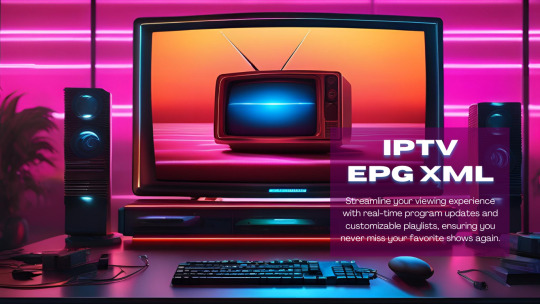
Tools and Methods for Extracting Metaverse VR Using XMLTV EPG Grabber
Metaverse VR has become an increasingly popular and immersive way for people to interact and engage with digital environments.
One of the key aspects of the Metaverse VR experience is the ability to access Electronic Program Guide (EPG) data to discover and schedule virtual events, shows, and activities.
In this blog post, we'll explore various tools and methods available for extracting Metaverse VR data using epg grabber.
What is XMLTV EPG Grabber?
XMLTV is a set of programs to process TV (tvguide) listings and help manage your TV viewing, recording, and scheduling. XMLTV EPG grabber is a tool specifically designed to extract EPG data from various sources and provide a standardized XML format for TV listings.
This format can be utilized to populate electronic program guides in various applications, including those for Metaverse VR experiences.
Tools for Extracting Metaverse VR Using XMLTV EPG Grabber
1. XMLTV GUI Grabber
XMLTV GUI Grabber is a user-friendly graphical interface tool that allows users to easily configure and run XMLTV grabbers. It provides a simple way to select sources, set up grabber options, and initiate the extraction process. This tool is suitable for users who prefer a more intuitive and visually guided approach to EPG data extraction.
2. Web-based XMLTV Grabbers
There are several web-based services and tools that offer XMLTV EPG grabber functionality. These platforms typically allow users to input their desired sources and parameters, and then generate XMLTV-compatible output for consumption in Metaverse VR applications.
Web-based grabbers are accessible from any device with an internet connection, making them convenient for users who require flexibility in their data extraction process.
3. Custom Scripting and Automation
For users with specific requirements or unique sources for Metaverse VR EPG data, custom scripting and automation can be employed to extract and format the XMLTV data. This method involves writing custom scripts or utilizing automation tools to retrieve and process EPG data from different sources, providing a high degree of customization and flexibility.
Methods for Utilizing Extracted EPG Data in Metaverse VR
Once the EPG data has been extracted using XMLTV grabbers, there are several methods for utilizing this data within the Metaverse VR environment:
Integration with Virtual Event Scheduling: EPG data can be integrated into virtual event scheduling systems within the Metaverse VR, allowing users to discover and RSVP to upcoming virtual events and experiences.
Customized Virtual TV Guide: The extracted EPG data can be used to create a customized virtual TV guide within the Metaverse VR, enabling users to browse and select virtual shows and broadcasts to attend.
Personalized Notifications and Reminders: Utilizing the extracted EPG data, personalized notifications and reminders can be sent to users within the Metaverse VR to ensure they don't miss out on their favorite virtual events or activities.
XMLTV EPG grabbers provide a valuable means of extracting xmltv epg format for use within the Metaverse VR. Whether through user-friendly graphical interfaces, web-based services, or custom scripting, these tools and methods empower users to enrich their virtual experiences with relevant and up-to-date content.
By leveraging the extracted EPG data, developers and content creators can enhance the richness and interactivity of the Metaverse VR environment, offering users a more immersive and engaging virtual experience.
Developing Mixed Reality Applications with XMLTV Data
Mixed Reality (MR) applications have been gaining traction in recent years, revolutionizing the way we interact with our digital environment. A key factor in the improvement of XMLTV data for parsing and presentation. This comprehensive guide will introduce you to the world of XMLTV data parsing and the role it plays in the development of MR applications. We'll also delve into open-source tools and scripts that can enhance your MR development experience.
Understanding XMLTV in the Context of Mixed Reality
XMLTV is a standard that is primarily used for the interchange of TV program schedule information. However, its versatile nature allows it to be adapted for use in the development of MR applications.
XMLTV Data Parsing
XMLTV data parsing is a method of extracting useful information from XMLTV feeds. This data can be used to populate the EPG (Electronic Program Guide) of a MR application, providing users with information on available programs.
Metaverse on XMLTV technology
The metaverse, a collective virtual shared space created by the convergence of physical and virtual reality, can benefit from the use of XMLTV technology. XMLTV data can be used to create a more immersive and interactive experience for users in the metaverse.
Integrating VR CGI and XMLTV
Virtual Reality (VR) Computer Generated Imagery (CGI) can be integrated with XMLTV data to create more realistic and engaging MR experiences. This integration can also enhance the user's sense of presence in the MR environment.
Open-Source Tools and Scripts for XMLTV Data Parsing
There are numerous open-source tools and scripts available for XMLTV data parsing. These tools help developers to parse, manipulate, and present XMLTV data in their MR applications.
TVHeadEnd
TVHeadEnd is an open-source TV streaming server and recorder that supports XMLTV data. It can parse and save XMLTV data into the EPG database, providing a crucial function for MR applications.
M3U
M3U is a simple text format that can be used to create playlists and organize XMLTV data. It can be used in conjunction with XMLTV data to create a more structured and user-friendly EPG.
XPath
XPath is a language that is used to navigate through elements and attributes in XML documents. It can be used to identify specific nodes or attributes in xmltv descriptions that contain useful EPG information.
StereoKit
StereoKit is an open-source mixed reality library for building HoloLens, VR, and desktop experiences. It can be used to create cross-platform MR experiences with C# and OpenXR.
Building Interactive Mixed Reality Interfaces in XMLTV Data Parsing and Presentation
Building interactive MR interfaces using XMLTV data parsing and presentation involves several steps. These include setting up your development environment, parsing the XMLTV data, creating the MR interface, and testing the application.
Setting Up Your Development Environment
Before you can start developing your MR application, you need to set up your development environment. This typically involves installing the necessary software and hardware, such as a MR headset, a development IDE, and the necessary SDKs.
Parsing XMLTV Data
Once your development environment is set up, you can start parsing the XMLTV data. This involves extracting useful information from the XMLTV feed and saving it into your application's EPG database.
Creating the MR Interface
After parsing the XMLTV data, you can start creating the MR interface. This involves designing and implementing the user interface elements, such as menus, controls, and displays.
Testing the Application
Once the MR interface is complete, you can start testing your application. This involves checking the functionality of the application and ensuring that the XMLTV data is correctly parsed and presented.
Developing mixed reality applications using XMLTV data involves a combination of data parsing, interface design, and application testing. By understanding the role of XMLTV data in MR development and utilizing the available open-source tools and scripts, you can create engaging and interactive MR applications. So, dive into the world of XMLTV and explore how it can enhance your MR development experience.
youtube
3 notes
·
View notes
Text
VR Surfer Instructional Video (Video, 1996)
Instructional video for a 90's consumer VR headset for TV and PC. Includes an Animusic video. You can watch it here.
You can view the headset's official website on the Wayback Machine here, and visit an old unofficial webpage about it here.
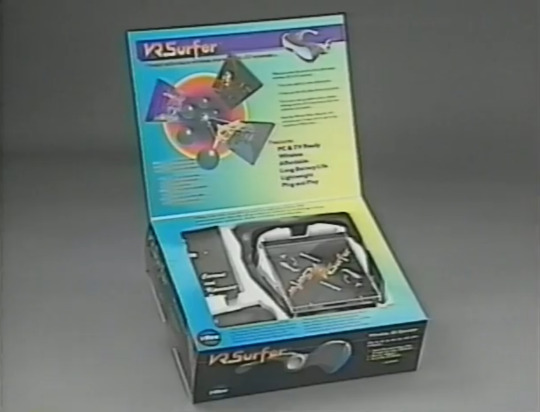


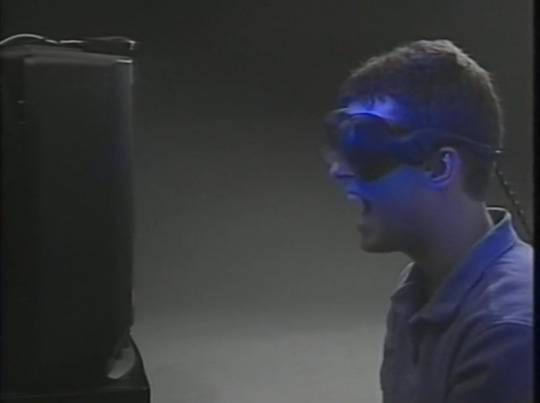
#internet archive#video#videos#instructional video#vr#virtual reality#virtual reality headset#early cgi#90s cgi#animusic#wayback machine#old web#early web#web history#internet history#webcore#internetcore#90s web#1996#1990s#90s
11 notes
·
View notes
Text
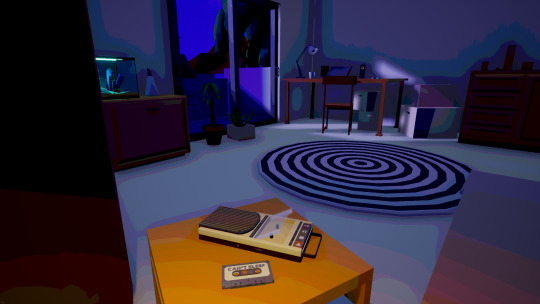
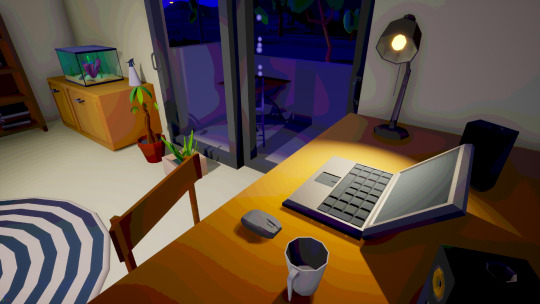

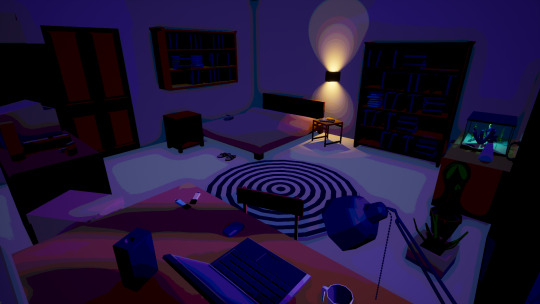
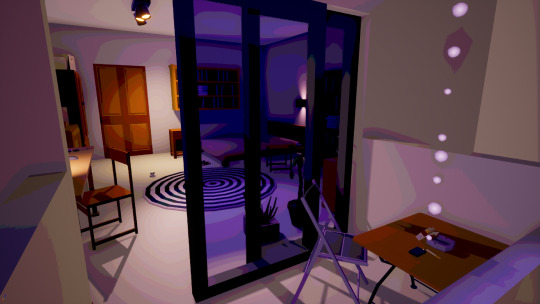

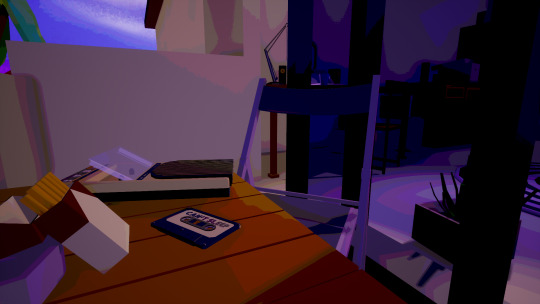
Screenshot from another VR project Can't Sleep.
You wake up in the middle of the night, you can’t sleep. You put in a guided meditation cassette in hopes of helping you fall asleep…
This was my graduation work on MOME - also not playable anywhere :) I was a little too ambitious with this one. I hope to return to this project sometime, and properly finish it. I think the main ideas behind it are still relevant. super secret unlisted trailer video:
youtube
#nemesbarna#vr#unreal engine#posterized#prototype#can't sleep#game dev#Youtube#indie dev#cgi#3dart#3d art#3d artwork
3 notes
·
View notes
Photo
Damn, I love the VR CGI in this so much. It's so good. I eat it up with a spoon.







SP. 109 - Johnny Mnemonic (1995)
Infiltrating into Hotel Beijing network.
3K notes
·
View notes
Text
Immersive Marketing is the Future: How AR, VR & Game Tech Are Revolutionizing Brand Experiences
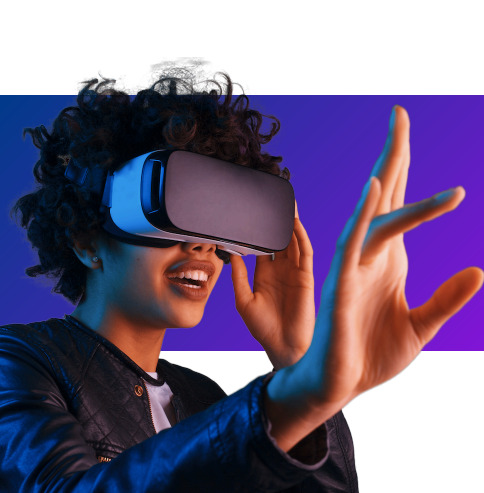
1. Unlocking the Power of Immersive Experiences: How AR, VR & Game Tech Elevate Brand Engagement
In today's digital landscape, brands are constantly seeking innovative ways to captivate their audiences. Augmented Reality (AR), Virtual Reality (VR), and Game Technology have emerged as powerful tools to create immersive experiences that resonate. PRAKRIA
At PRAKRIA, we specialize in crafting these immersive solutions. Imagine interactive virtual showrooms that transform shopping into an adventure, lifelike product demos that leave lasting impressions, and training simulations that revolutionize learning. Our expertise in AR and VR allows us to push the boundaries of reality, creating brand engagements that are both captivating and memorable.
By integrating AR, VR, and Game Tech into your marketing strategy, you not only differentiate your brand but also foster deeper connections with your audience. Let us help you redefine your brand's digital presence and transport your audience to extraordinary realms.
2. From Concept to Screen: Crafting Compelling Visual Narratives with Films, Animation & VFX
Visual storytelling is a potent tool in conveying your brand's message. Through films, animation, and visual effects (VFX), brands can create narratives that not only inform but also inspire and engage.
At PRAKRIA, we bring your visions to life with our comprehensive filmmaking services. From scriptwriting and storyboarding to final production and post-production, we handle every aspect of the filmmaking journey. Our team excels in creating both 2D and 3D animations, coupled with cutting-edge CGI, ensuring that every frame resonates with your audience.
By leveraging our expertise, your brand can craft stories that leave a lasting impact, fostering stronger connections and driving engagement.
3. Web Wonders: Designing Websites That Captivate and Convert
Your website serves as the digital storefront of your brand. An effective website not only showcases your offerings but also provides an engaging user experience that drives conversions.
At PRAKRIA, we combine creativity with functionality to develop websites that captivate visitors and convert them into loyal customers. With over two decades of experience, our team ensures that every element of your website—from intuitive user interfaces to robust backend architecture—works cohesively to meet your business goals.
Let us help you craft a digital presence that not only looks stunning but also delivers tangible results.
0 notes
Text
youtube
Just for good measure, here's the early Nineties virtual reality candy commercial that various people and algorithms suggested when I was looking for the other early Nineties virtual reality candy commercial.
#jolly ranchers#virtual reality#vr#the lawnmower man#lawnmower man#cgi#90s#mind's eye aesthetic#commercial#advertisement#ad#video
0 notes
Photo
HEXADECIMAL FROM REBOOT (1994)

#reboot 1994#hexadecimal#antagonist#cartoons#90's tv#90's cartoons#90's aesthetic#cyberpunk#video games#sci-fi#retro#vr#virtual reality#vintage cgi#cgi
1K notes
·
View notes